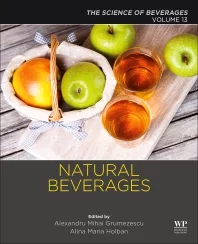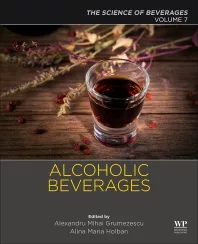Natural and Organic Ingredients Expand
Natural appeal for health-focused consumers.

Consumers are continuing to purchase organics despite the lingering pressures the recession has brought to their wallets. The percent of U.S. households purchasing organic products inched slightly higher from 67 percent to 68 percent, based on all outlet consumer scanned shopping behavior, according to Schaumburg, Ill.-based Spins’ Consumer Report for Mid-Year 2010.
An analysis of the ongoing buying behavior of more than 42,000 organic buying households revealed continued consumer expansion in the sector, Spins reports. Total U.S. household penetration for organics grew in 34 categories, a statistic that suggests organic consumers are increasing the diversity of products within their basket, it says. Coffee, coffee substitutes and cocoa was one of the top growing food and beverage categories attracting the greatest number of incremental consumers. The segment grew half a percentage point in the number of households purchasing organics.
The coffee, coffee substitutes and cocoa category recorded the greatest increase in natural and organic beverage sales as well. The category grew 35.6 percent in the natural and conventional channels combined for the year ending Dec. 25, 2010, according to Spins.
In 2010, more natural and organic beverages grew in conventional channels vs. natural channels, Spins reports. The conventional channel also is responsible for a greater number of natural and organic beverage sales.
For the channels combined, the refrigerated juices and functional beverages category reported the most sales and grew 8.1 percent to $589.1 million for the year ending Dec. 25, 2010. Refrigerated non-dairy beverages followed with $532.2 million in sales, which shows a 12.5 percent gain in measured channels during the time period, Spins says.
Natural expansion
With most beverage categories reporting increases in natural and organic sales, many ingredient suppliers also are reporting increased interest in natural ingredients from formulators.
“We continue to see an increased desire for natural ingredients for beverage products — specifically natural flavors, colors and sweeteners,” says Jessica Jones-Dille, senior manager of industry trends and market research for Wild Flavors Inc., Erlanger, Ky. “Despite the economic pressure on the family’s budget, we find that consumers are reading labels more and more and are seeking out natural ingredients in products.”
As a natural color and flavor supplier, Wild Flavors has seen no slowdown in the growth of these ingredients this year, Jones-Dille says. In addition, the company finds that natural sweetness enhancers are quite popular this year as well as healthful ingredients that offer natural functionality, she says.
Formulators continue to seek solutions to reduce calories in their beverages across a wide range of categories, including their natural formulations. Rebiana, which comes from the best-tasting components of the stevia leaf, offers food and beverage companies a natural, zero-calorie way to sweeten their products.
“Rebiana is a high-purity sweetener that is consistent in quality and taste,” says Ralf Loeffelholz, global commercial manager for Truvia at Cargill Health and Nutrition. “This sweetener is different from stevia used in other applications, which typically refers to a mixture of many components from the stevia leaf.”
The natural channel has been an earlier adopter of rebiana as a sweetener, but conventional beverage marketers are aware of the consumer as well as policy interest in the ingredient and demand from them also is increasing, Loeffelholz says. Functional beverages, juice drinks, ready-to-drink teas and powdered beverages have been at the forefront of using rebiana, he says.
“The more aggressively priced CSD brands will remain a challenge due to line-pricing issues, brand and specifically flavor loyalty,” Loeffelholz says.
Sensient Food Color, St. Louis, has seen a significant increase in the demand for natural colors during the past few years.
“Most demand is driven by consumers’ desire for clean, more simplified labels, and changes in the regulatory environment in Europe,” says Steve Morris, commercial director of Sensient’s U.S. food group. “Our natural colors are the fastest growing products in our U.S. and global portfolio today. Whether reformulating existing products or developing new products, most of our customers believe that natural colors differentiate products and are in alignment with consumer demand.”
In addition, Sensient’s natural color solutions are an environmentally friendly ingredient offering, the company says. “Sensient’s natural colors use raw materials extracted from botanical sources that are natural resources,” says Mark Goldschmidt, technical director at Sensient Colors. “We continue to improve the vibrancy and stability of natural colors by developing more stable botanical sources, identifying new sources or even developing new plant hybrids. Selective plant breeding programs and new hybrid creation are important factors in producing more stable botanical sources.”
A majority of Sensient’s natural colors are genetically modified organism-free, preservative-free and allergen-free. “We know that people want cleaner, more wholesome ingredients in their products, and we also know that natural colors possess compounds that promote health and wellness,” Goldschmidt says. “We offer a complete portfolio of natural colors like carotenoids and anthocyanins, which capture many of the healthy attributes inherent in colors derived from fruits and vegetables, such as antioxidants, vitamins and polyphenols.”
Sensient Food Colors recently made a capital investment to add aseptic packaging capabilities. Aseptic packaging capabilities offer customers preservative-free colors that deliver maximum shelf life, enhance sustainability and improve product safety, the company says.
“Our customers want preservative-free natural colors to align with consumer demand for wholesome, clean label declarations for food and beverage products,” Morris says. “Eliminating preservatives from natural color systems significantly reduces shelf life. With our new aseptic packaging system, we are able to offer customers preservative-free natural colors that have a shelf life comparable to a preserved color. In addition, packaging preservative-free products under aseptic conditions provides an added assurance for reducing the risk of micro-biological contamination.”
A growing number of natural food colorings are being commercially produced, not only due to consumer concerns relating to synthetic dyes, but also to an ongoing and increasing demand from consumers for foods providing health and wellness benefits while remaining as natural as possible, says Brian Sethness, sales and marketing manager of Sethness Products Co., Lincolnshire, Ill.
“Viewed as one of the most widely used food colorants in the world, caramel color continues to gain in popularity among food and beverage manufacturers aiming to provide naturally produced colorings to consumers, who are studying product labels even more than in the past,” he says.
Sethness Products produces numerous Class I caramel colors, which have become the fastest growing segment in the caramel color industry as they satisfy consumer demand for cleaner labels, Sethness says.
“Class I caramel colors are minimally processed without any ammonia or sulfites,” he says. “The world’s largest retailer of natural foods considers all four classes of caramel color ‘acceptable as a natural color,’ but prefers that Class I colors be used wherever possible. We anticipate our new offerings will complement our existing Class I offerings quite nicely.”
Flavors and botanicals
The interest for organic ingredients and flavors is back, but the beverage manufacturer is not expecting a price premium, says Domenick Luccarelli, director of business development at A.M. Todd Co., Kalamazoo, Mich. The pressure is on to deliver natural and organic certified ingredients and flavors at an affordable cost, he says.
Companies continue to develop organic and natural beverage products, but are delaying the launch phase until their confidence increases, adds Jim Cain, A.M. Todd’s director of product development.
“Many development projects were initiated and completed awaiting an economic upturn,” he says. “It seems manufacturers are trying to accurately time their new launch to coincide with this economy recovery.”
Superfruit flavors in organic beverage have reached a point where they appear commonly, says Charles Dodson, A.M. Todd’s director of consumer insights and marketing. New flavor combinations in organic beverages included pomegranate/cider, peach/Indian gooseberry, acai/chokeberry, berry/hibiscus, ginger/lemongrass, dragonfruit/hibiscus and pomegranate/pepper. For natural beverages new flavor combinations include blackberry/hibiscus, coconut/guava, cucumber/pineapple, ginger/jasmine, lychee/wasabi and pomegranate/yumberry, he says.
BI Nutraceuticals, Long Beach, Calif., which provides natural botanical extracts, has seen an increase in natural ingredients in functional beverages, says Walter Postelwait, the company’s vice president of marketing and sales. BI Nutraceuticals is not seeing the same demand for organic botanicals because of the additional cost, he says.
Natural tea ingredients, such as green tea, green tea extract, yerba mate and oolong, continue to be a large growth area for BI Nutraceuticals. Natural superfruits are another segment, Postelwait says.
“Everyone continues to keep searching for the new and better superfruit,” he says. “Last year was acai, and I would say the last two years people are beginning to look at maqui berry.”
The company also continues to see botanical extracts that provide energy in demand. “Ingredients like guarana, yerba mate — anything that can bring a natural caffeine load to the beverage — is still very popular,” he says.
Ethical Naturals, San Anselmo, Calif., also is a supplier of natural botanical ingredients for the beverage industry. Amy McKelvey, the company’s director of new markets, sees natural ingredients growing with consumers’ increased interest in preventative care.
“People are looking at the level of preservatives in products and they are looking at the different fruits and herbs and life healing properties that their food holds,” she says.
Ethical Naturals has seen increased interest in natural ingredients for healthy beverages targeting beauty, cognitive health, energy and relaxation. Within these categories, formulators’ largest area of interest is in antioxidant polyphenols, it says.
Ethical Naturals has two new generally recognized as safe ingredients that are approved for use in beverages and foods, which offer polyphenols. Ethical Naturals’ Standardized Fruit Blend is derived from concentrated extracts of fruits and berries that are naturally high in polyphenol and antioxidant compounds, including apple, bilberry, blueberry, chokeberry, cranberry, goji berry, grape, mangosteen and pomegranate. The blend is standardized to an ORAC value of 7,500 units per gram with 40 percent polyphenol content. The company also offers ORAC 15M, an all-natural extract of the whole grape. It has an ORAC value of 15,000 units per gram and offers at least 80 percent polyphenol content. BI
Looking for a reprint of this article?
From high-res PDFs to custom plaques, order your copy today!





